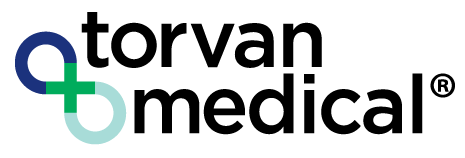Introduction
Sterile processing is the backbone of infection prevention in healthcare, ensuring that medical instruments and devices are thoroughly cleaned, sterilized, and ready for safe use in patient care. The Sterile Processing Department (SPD) is responsible for following strict protocols for inspecting and cleaning medical tools and instruments in order to minimize the risk of patient infections.
Failing to adhere to proper reprocessing procedures can have serious consequences, including the spread of hospital-acquired infections (HAI’s). According to the CDC, on any given day in the United States, one in 31 hospital patients contracts an HAI. Proper sterile processing can reduce the spread of these infections, improving patient safety and clinical outcomes and enhancing overall healthcare efficiency.
The scope of sterile processing in modern facilities extends well beyond cleaning and sterilizing. Modern hospitals and surgical centers rely on a complex network of SPD professionals supported by advanced technology and strict regulatory oversight to maintain a seamless and safe reprocessing workflow. As demand increases for efficient, ergonomic and automated solutions, investing in cutting-edge equipment has become a necessity for healthcare facilities worldwide.
The Sterile Processing Workflow
A well-defined sterile processing workflow is essential for maintaining high standards of cleanliness and safety. The process typically follows these critical steps:
- Point of Use – The first step of the process is the removal of organic matter and bioburden immediately after the tool or device is used. This removes the majority of surface debris and allows the device to remain moist during transport, reducing the opportunity for debris to dry out and form hard-to-remove biofilm.
- Decontamination – The second step involves the removal of organic and inorganic contaminants through manual cleaning, ultrasonic cleaning and/or automated washing systems. The use of specialized reprocessing sinks with automated pre-cleaning systems, such as those offered by Torvan Medical, significantly reduces manual labor while ensuring thorough decontamination.
- Instruments arrive in the decontamination area from operating rooms and other clinical units.
- Staff wear personal protective equipment (PPE) to minimize exposure to contaminants.
- Cleaning solutions, high-pressure water systems, and ultrasonic cleaners help remove bioburden from instruments.
- Inspection & Assembly – After decontamination, instruments are carefully inspected for damage or defects. Technicians must ensure that all components are functioning correctly before reassembly.
- Visual inspection using specialized tools detects microscopic damage or contamination.
- Assembly stations are organized to streamline the process of reconfiguring instrument trays for different surgical procedures.
- Ergonomic workstations play a vital role in this phase by providing adjustable work surfaces that minimize strain on SPD staff while enhancing inspection precision.
- Sterilization – The sterilization process eliminates all microbial life from medical instruments. Methods include:
- Steam sterilization (autoclaving) – The most common and effective method using high-pressure steam.
- Ethylene oxide (EtO) sterilization – Used for heat-sensitive instruments.
- Hydrogen peroxide plasma sterilization – A low-temperature method for delicate and/or heat-resistant instruments.
- Chemical sterilization – Utilizing powerful disinfectants for specific applications.
- Storage & Distribution – Once sterilized, instruments must be properly stored so they remain sterile until needed. Proper storage solutions, including sterile containers and environmental controls, help ensure that contamination risks are minimized. Efficient distribution processes ensure that surgical teams have timely access to sterile instruments, improving patient care and procedural efficiency.
- Sterile storage areas must have controlled temperature and humidity levels to prevent contamination.
- Instruments are categorized and labeled for efficient tracking and retrieval.
- Just-in-time inventory strategies optimize the supply chain, reducing the risk of expired or compromised sterile supplies.
Challenges Faced by Sterile Processing Departments
Sterile Processing Departments (SPD’s) operate under high-stakes conditions where even minor lapses can have significant consequences. Some of the key challenges include:
- High Risk of Cross-Contamination – Without proper cleaning and decontamination protocols, residual biofilms and pathogens can survive on instruments, leading to potential infection outbreaks.
- Poorly cleaned instruments with internal lumens, such as endoscopes, present a higher risk of contamination.
- Inefficient workflow increases the chance of clean instruments coming into contact with dirty instruments.
- Staff Fatigue and Injury – SPD staff are required to perform a number of repetitive tasks, including cleaning, lifting and sorting of instruments. These tasks can cause musculoskeletal strain and long-term injuries. Height-adjustable workstations and ergonomic reprocessing sinks from Torvan Medical can alleviate strain and improve staff comfort and well-being.
- Studies indicate that repetitive strain injuries (RSIs) are a leading cause of absenteeism among SPD staff.
- Investing in ergonomic equipment reduces turnover and enhances job satisfaction.
- Regulatory Compliance – SPDs must comply with stringent standards set by organizations such as:
- Association for the Advancement of Medical Instrumentation (AAMI)
- Food and Drug Administration (FDA)
- Centers for Disease Control and Prevention (CDC)
- Occupational Safety and Health Administration (OSHA)
Compliance requires continuous training, updating workflows and protocols, and investment in validated cleaning and sterilization equipment.
How Advanced Equipment Enhances Sterile Processing Efficiency
Advancements in sterile processing technology have revolutionized the efficiency and effectiveness of SPDs. By integrating modern equipment, hospitals can improve workflow, reduce contamination risks, and support staff safety.
- Reprocessing Sinks with Automated Pre-Cleaning Systems – Torvan Medical’s state-of-the-art reprocessing sinks come equipped with automated pre-cleaning functions, significantly reducing the manual workload of SPD staff. These sinks feature wrist-friendly edges and deep basins to improve ergonomics while enhancing performance.
- TPS Flushing Pump for Lumened Instruments – Flushing the internal channels (“lumens”) of endoscopes, and other devices, is a complex and critical task. The TPS Flushing Pump ensures thorough and consistent flushing according to the endoscope manufacturer’s Instructions for Use (IFU), effectively removing debris and preventing blockages that could compromise instrument sterility.
- Height-Adjustable Workstations – Repetitive strain injuries are common in SPDs due to prolonged standing and manual cleaning. Torvan Medical’s height-adjustable workstations enable technicians to work in optimal ergonomic positions, reducing fatigue and enhancing productivity. Shelving and holders for additional accessories can be kept within easy reach, reducing the need for stretching and twisting while putting instrument sets together.
Torvan Medical’s advanced reprocessing sinks, ergonomic workstations, and flushing pump streamline sterile processing by reducing contamination risks and improving staff efficiency.
Compliance & Best Practices for Effective Sterile Processing
Ensuring compliance with industry standards and best practices is essential for maintaining the highest levels of patient safety. Here are key strategies for optimizing sterile processing operations:
- Using Validated Cleaning and Sterilization Methods – Hospitals must follow scientifically validated protocols for cleaning and sterilizing instruments. Regular audits and quality control checks ensure compliance with regulatory guidelines.
- Training on Proper Decontamination Protocols – Ongoing education and certification programs help SPD technicians stay up to date with the latest sterilization techniques and safety standards.
- Utilizing Automated Solutions for Consistency – Manual cleaning is prone to human error, making automation an invaluable tool for improving reliability. Investing in automated washers, flushing systems, and tracking software enhances accuracy and accountability in sterile processing.
Conclusion
The future of sterile processing lies in investing in automation, efficiency, and stringent infection prevention measures. As hospitals face increasing pressure to maintain high standards of cleanliness and safety, investing in advanced equipment is no longer optional—it is essential.
By integrating cutting-edge sterile processing solutions like Torvan Medical’s ergonomic workstations, reprocessing sinks, and the TPS Flushing Pump, healthcare facilities can enhance efficiency, protect staff from injury, and reduce hospital-acquired infections. These innovations not only improve workflow but also contribute to better patient outcomes and compliance with regulatory standards.
Torvan Medical is committed to revolutionizing sterile processing with innovative solutions designed to optimize efficiency and safety. Contact us today to learn how our advanced equipment can transform your SPD and elevate your hospital’s infection control standards.


